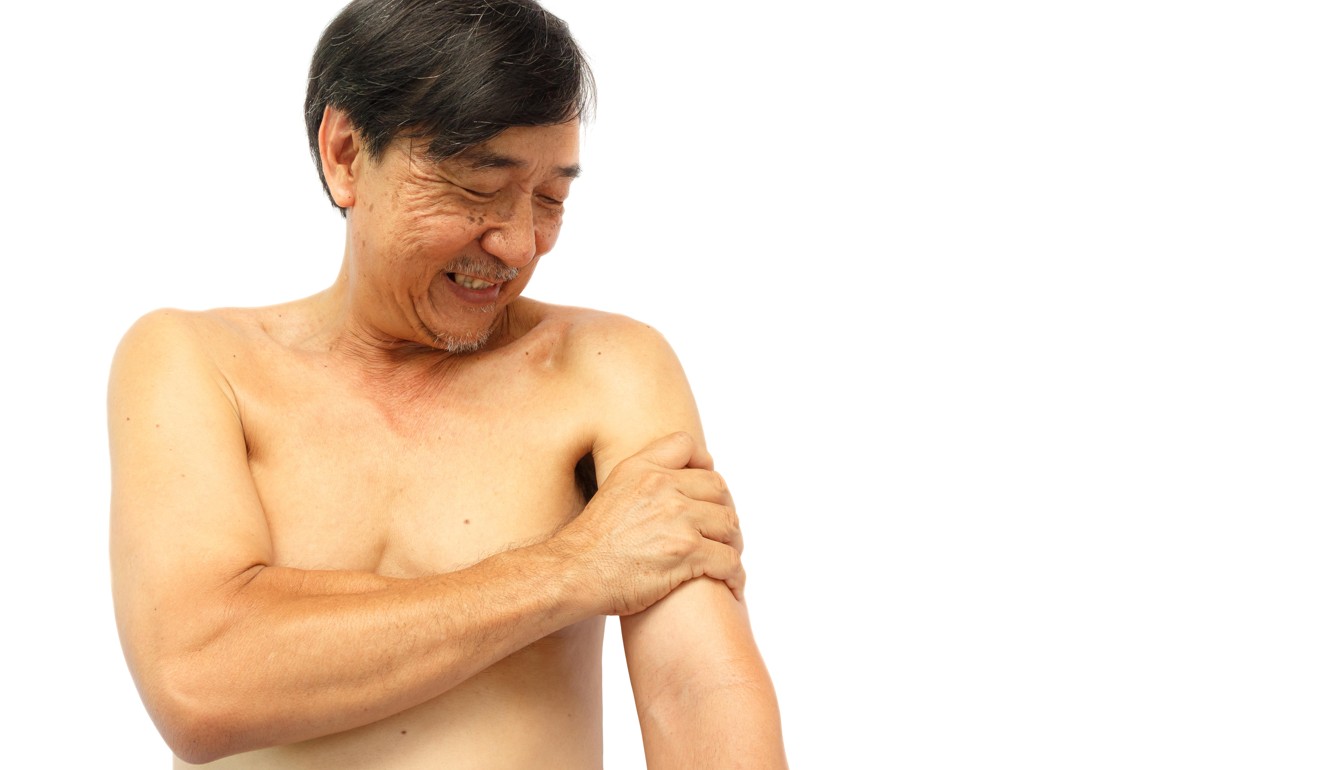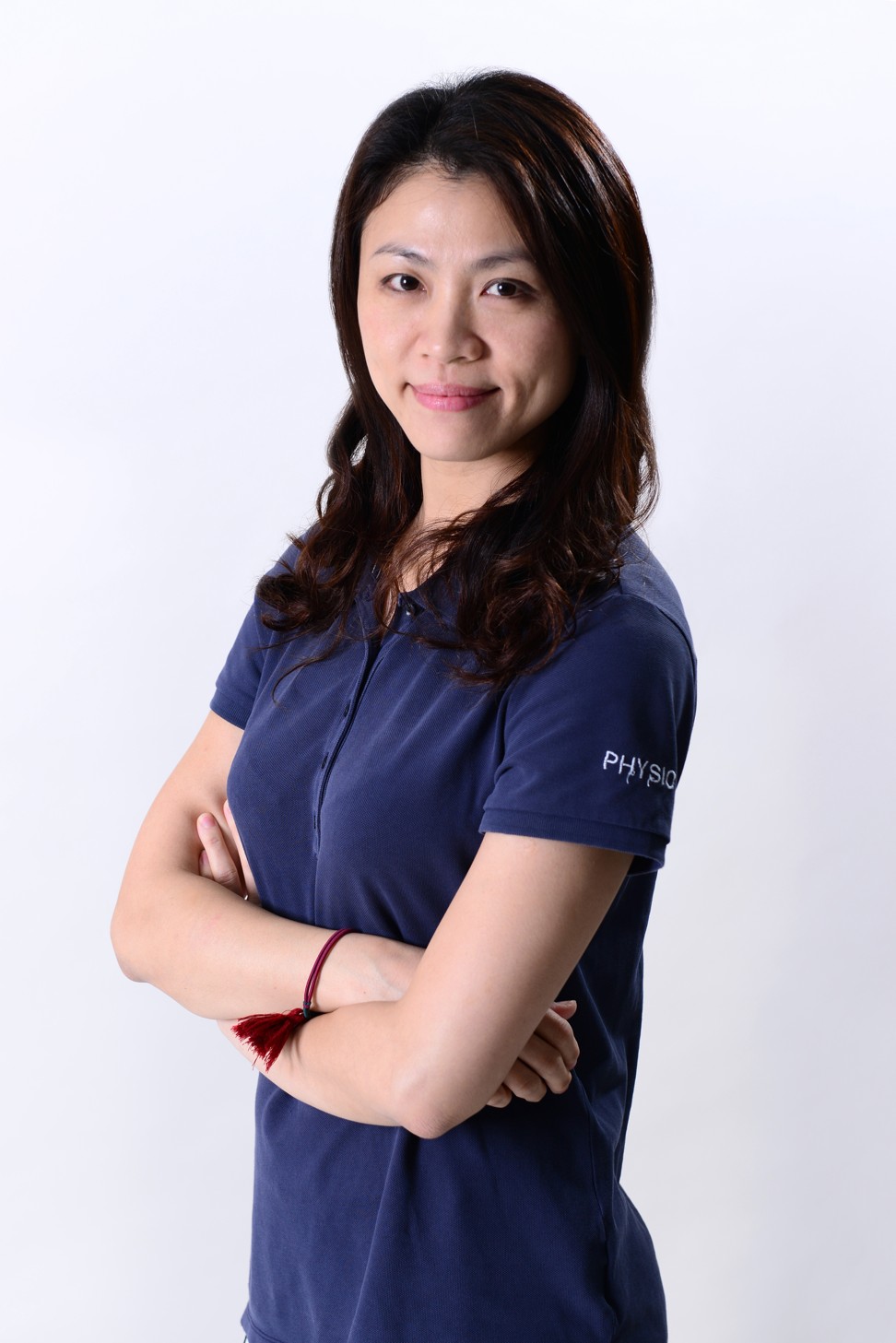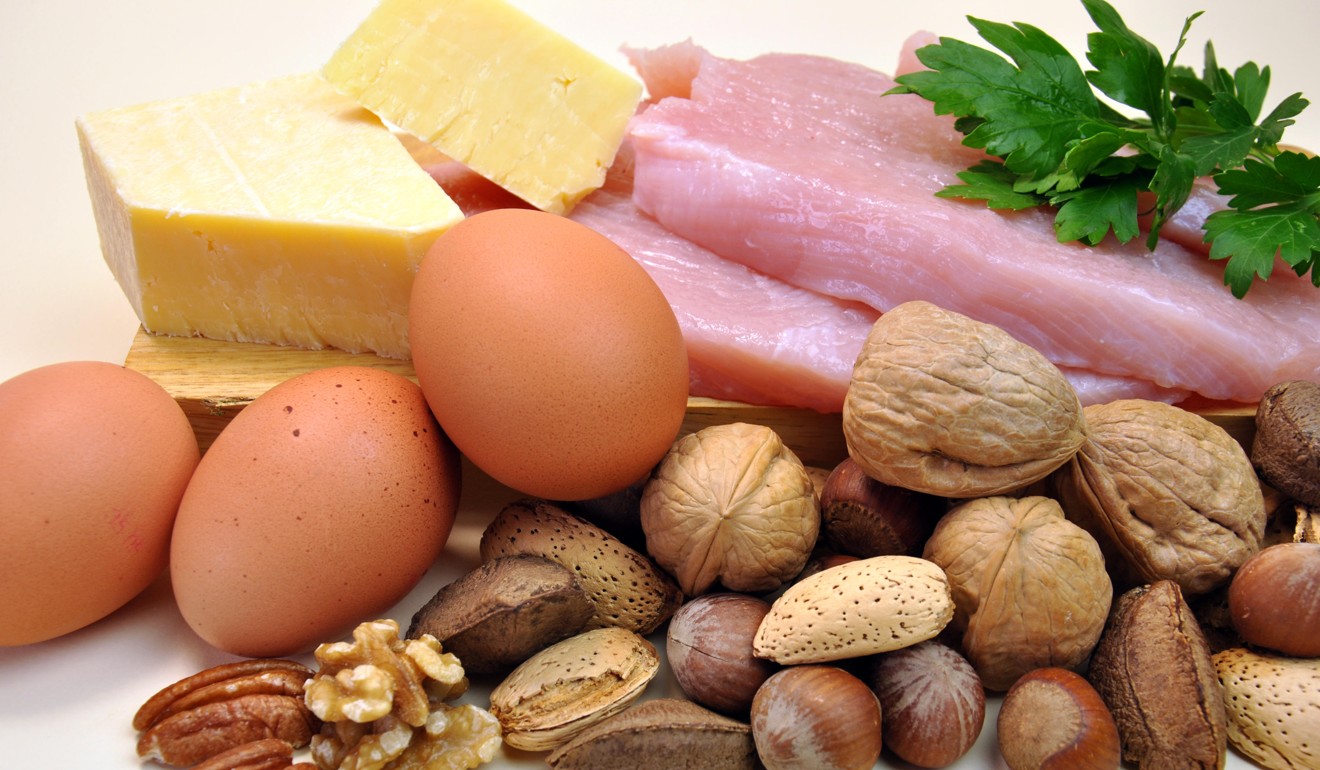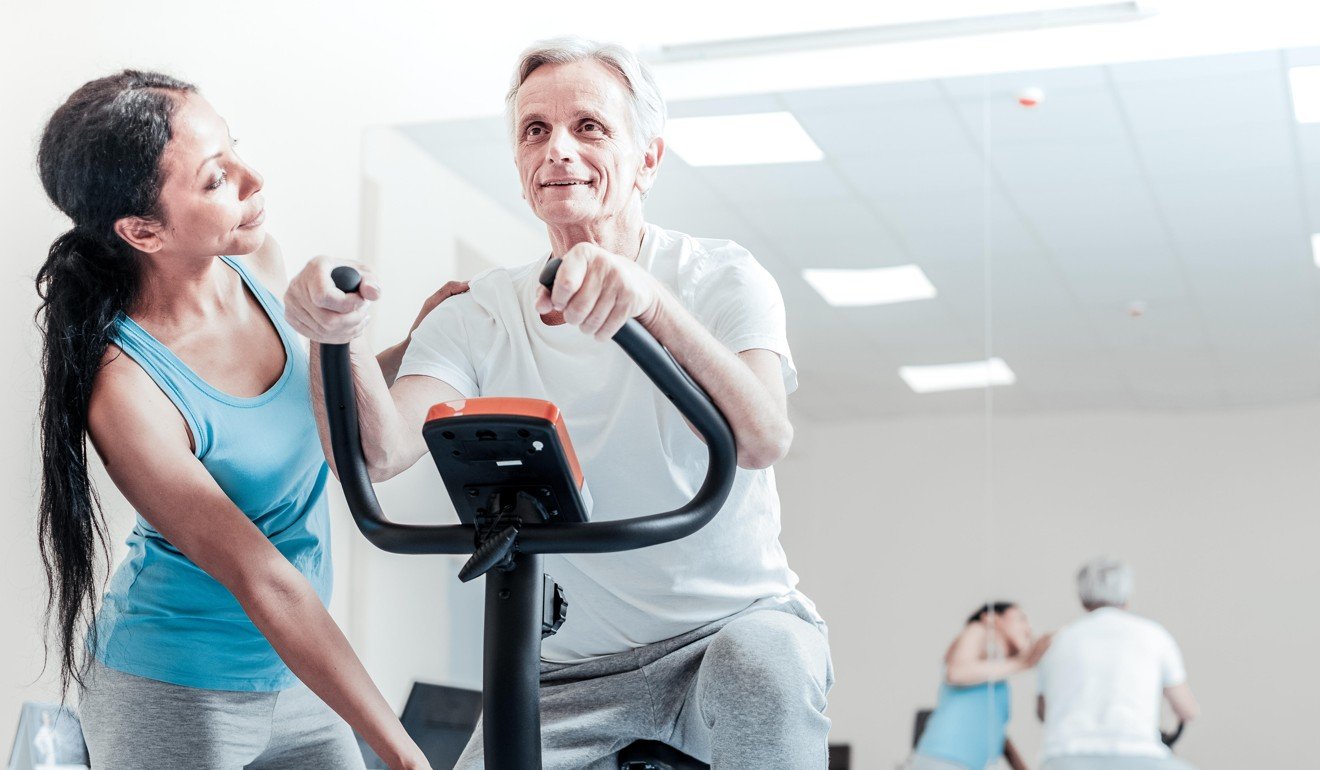
Age-related muscle loss: what it is, why it happens and what you can do to combat it
- We lose up to 8 per cent of our muscle mass each decade, starting from the age of 40, and this can double at 70 years old, leading to a loss of strength and function
- Loss of muscle mass and strength (sarcopenia) can be diagnosed with simple tests, and there are ways to slow down or prevent the decline
Most of us start to lose muscle mass from as early as our 40s.
As we get older the problem (known as sarcopenia) can progressively worsen, affecting our strength, energy and mobility, as well as increasing our risk of falls, illness and poor health.
Dr Vincent Lau Chun Fai, chief doctor at Matilda Clinic in Central, says the condition is caused by multiple factors.
It’s commonly observed in people who are physically inactive, although other contributing factors might include inadequate nutrition, lowered sex hormone levels, a reduced ability to synthesise protein, and mitochondrial dysfunction, an often inherited disorder that refers to the inability of the mitochondria (the energy-producing component of cells) to completely burn food and oxygen to generate energy.

According to Dr Low Yen Ling, director of research and development at Abbott Nutrition Asia Pacific Centre in Singapore, adults, on average, lose 8 per cent of their muscle mass every decade starting at age 40.
After 70 years old, that rate may double, although if you are ill, injured or aren’t getting adequate nutrition, it may accelerate even more.
“Muscles play an important role in our body’s movement, balance and posture, as well as our metabolism and even facial structure,” says Low.
“Some of the signs of muscle loss include less energy, slower walking speed, decreased strength, fatigue, and general weakness. One of the simplest ways to assess muscle strength in older adults is to look at their handgrip. If you’ve struggled with opening a jar whose lid wouldn’t budge, that’s an indication that your hands are getting weaker.”
A weaker handgrip can be a warning sign of a progressive loss of muscle strength. This may lead to reduced physical activity, preventing you from going out and socialising, exercising, or even doing simple activities.

Sarcopenia is also associated with an increased risk of physical disability from falls, and slower recovery from illnesses, leading to increased length of hospital stay and frailty.
“The problem with muscle loss is that it creeps up on you slowly, affecting your ability to perform daily activities that you take for granted now, like walking, getting up from a chair, lifting objects, or walking up the stairs,” Low adds. “And, very often, we mistake these difficulties as a natural part of ageing.”
Lau says that sarcopenia has metabolic effects too, causing a decline in the resting metabolic rate, which increases the risk of Type 2 diabetes and dyslipidemia. Dyslipidemia, in most cases, refers to high cholesterol levels along with high bad cholesterol levels.
Falls for elderly people can be serious. How to prevent them
It also refers to a minority of cases where the bad cholesterol levels are raised but the total cholesterol is normal. Dyslipidemia can increase your risk of heart attack or heart disease.
Sarcopenia doesn’t just affect your quality of life, making you less independent and more vulnerable to poor health.
With the number of elderly people – those aged 65 or older – in Hong Kong expected to reach 2.58 million by the year 2064 (or 35.9 per cent of the population), according to Hong Kong Population Projections 2015-2064, the condition also has implications for society as a whole, increasing disability and health care costs and burdening people who care for the elderly.

Sarcopenia is therefore a major public health problem. Unfortunately, says Low, there is very little awareness about the condition across Asia, despite its prevalence among the elderly.
This is why it’s so important for individuals and their doctors to keep an eye out for symptoms, and for doctors to talk to their elderly patients about ways to slow the progression of the condition.
“Early red flags for muscle loss include patient reports of weakness, slow walking speed, unintentional weight loss and a loss of strength,” says Low.
Exercising in middle age reverses impact of a sedentary lifestyle
“In some instances, doctors may perform additional tests to confirm the diagnosis of sarcopenia, such as measuring body composition, measuring handgrip strength, and walking tests to evaluate gait speed or sit-to-stand tests to evaluate flexibility, balance and strength.”
Preventing sarcopenia starts with eating the right foods and doing specific types of exercise.
Pooja Vig, a functional medicine nutritionist at The Nutrition Clinic in Singapore, says that it’s crucial to consume adequate amounts of protein, the main constituent of healthy muscle tissue.

Good protein sources include meat, fish and shellfish, eggs, dairy products such as milk, yogurt and cheese, nuts, beans and legumes. You can also add collagen powder to your diet. Sourced from animals, collagen powder is easy to use and is great for the joints, skin and gut.
To help your body digest and absorb protein, Vig says that you need optimal levels of stomach acid. Stomach acid production, however, tends to decline with age. Vitamin B12 can help with this – you can find it in foods like meat, fish and poultry, fortified breakfast cereal, low-fat dairy products and eggs.
Want some muscles ladies? Never mind the naysayers, just do it
Low says that nutrients like HMB leucine are also important. She explains:
“HMB is an amino acid metabolite that occurs naturally in the body and is found in small amounts in some foods, like avocado, grapefruit and catfish. It works with protein to rebuild and maintain muscle mass. New evidence suggests that as we get older, we produce less HMB and this is associated with less limb muscle and lower handgrip strength.”

Gwyneth Hung Ka Na, physiotherapy lead at Matilda International Hospital in Hong Kong, recommends progressive resistance exercise training (RET) for the major muscle groups.
This can be done using your own body weight as resistance or a machine to add load to your muscles. You can also use resistance bands or tubes.
Fortunately, it’s never too late to reap the muscle strengthening benefits of RET. Hung cites a study, published in 1990 in the Journal of the American Medical Associationthat showed the profound role of progressive RET.
Nonagenarians – individuals aged between 90 and 99 – were able to increase their muscle strength by an average of 174 per cent and gait speed by about 18 per cent with eight weeks of high-intensity progressive RET.

“If you are elderly or physically inactive, I suggest doing beginner-level exercises that work the major muscle groups like the chest, back, arms, shoulders, and upper and lower legs,” Hung says.
“The exercises can mostly be done while sitting if you’re just starting out, and they include workouts like chest presses, biceps curls, leg extension, leg curls, leg extensions and calf raises.
“Over time, and as you build your strength, you can move on to the next level and increase the frequency and number of sets.”

Use your body weight as resistance, or 50 per cent to 69 per cent of 1RM (One Repetition Maximum, meaning the maximum amount of weight you can lift for a given exercise).
Pilates, aerobics with strength training, and water-resistance classes are also good choices to help strengthen your muscles.
You can regain muscle and strength even if you are middle-aged and don’t exercise much or have a less than ideal diet. “You cannot stop the ageing process, but you can make better choices when it comes to your physical health, to prevent sarcopenia from affecting your quality of life,” says Lau.

